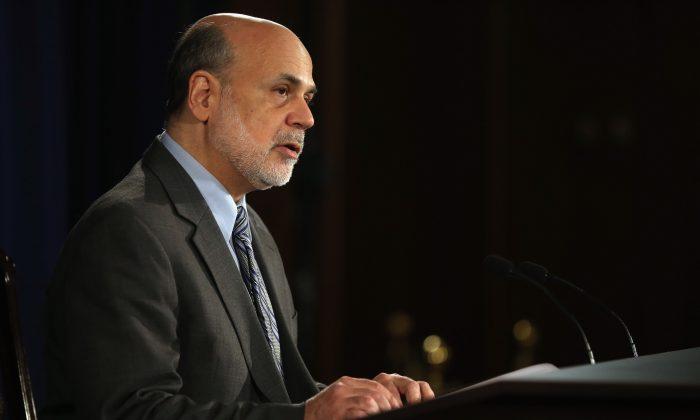The Federal Reserve (Fed) surprised markets and observers Wednesday by keeping bond purchases at $85 billion. Analysts were expecting a $9 billion reduction in purchases in light of improving economic data.
“The Committee sees downside risks to the outlook for the economy and the labor market as having diminished on net, since last fall, but the tightening of financial conditions observed in recent months, if sustained, could slow the pace of improvement in the economy and the labor market.”
The Fed doesn’t want to risk a deterioration in economic activity. By printing money and injecting $85 billion into the economy, the Fed has put a floor beneath mortgage rates and stabilized the housing market. Lower rates on treasury bonds also feed through to the general economy and have enabled firms as well as the federal government to spend.
“Conditions in the job market today are still far from what all of us would like to see,” Fed Chairman Ben Bernanke said at a press-conference after the announcement.
The market expected the so called “taper” because unemployment data and the housing market improved since the Fed started the current program of QE last September. In addition, the Fed was concerned its increasing stake in treasury bonds would impair the proper functioning of the market.
Bank of America explains that some of the indicators have moved in the right direction but aren’t good enough yet. “The unemployment rate has moved closer to the 7 percent ‘indication’ for ending QE. However, as we have argued and the minutes confirm, the Fed is only using 7 percent as a rough summary statistic for a broad-based recovery.”
In fact, the Fed is very cautious in its outlook, downgrading its forecast for 2014 GDP growth to 2.9 to 31 percent, below the 3.0 to 3.5 percent it estimated in June.
Wall Street veteran Victor Sperandeo agrees with this assessment. “The Fed is doing what they are doing because the economy the economy is extremely weak,” he said in an interview. “A lot of the employment is part time: lower hours, lower pay.”
Despite the persistent economic weakness, the stock market reached an all-time high, with the S&P 500 closing at 1725 and the Dow Jones Industrial Average at 15,676.
“It’s showing the Fed’s printing is helping the stock market, but it’s not helping the economy,” says Sperandeo.
He believes people with capital prefer investing in liquid assets rather than build companies from the ground up.
“Why would I want to start a new company and fight with regulators and go through all the new paperwork, rather than buy existing companies that have already put in place their lobbyists their people that know where the politicians’ sweet spot is,” he says.
Since big corporations are slashing costs to stay competitive, the employment picture remains weak. Starting new businesses usually leads to the hiring of full-time people and generates economic growth.
Longer term indicators such as the ratio of full-time employees to the general population linger at lows not seen in decades. Currently only 47.3 percent of the population has a full-time job, compared to 53.96 percent at the end of the 90s.
“The odds are against you if you build a new company. They are in your favor if you buy stocks,” says Sperandeo.
Nonetheless, QE is set to continue, according to Dan Oliver, principal at Myrmikan Capital, a New York-based hedge fund.
“It is hard to imagine the Fed really punishing Congress and the economy in the name of austerity … Of course QE is going to continue at some level.”





